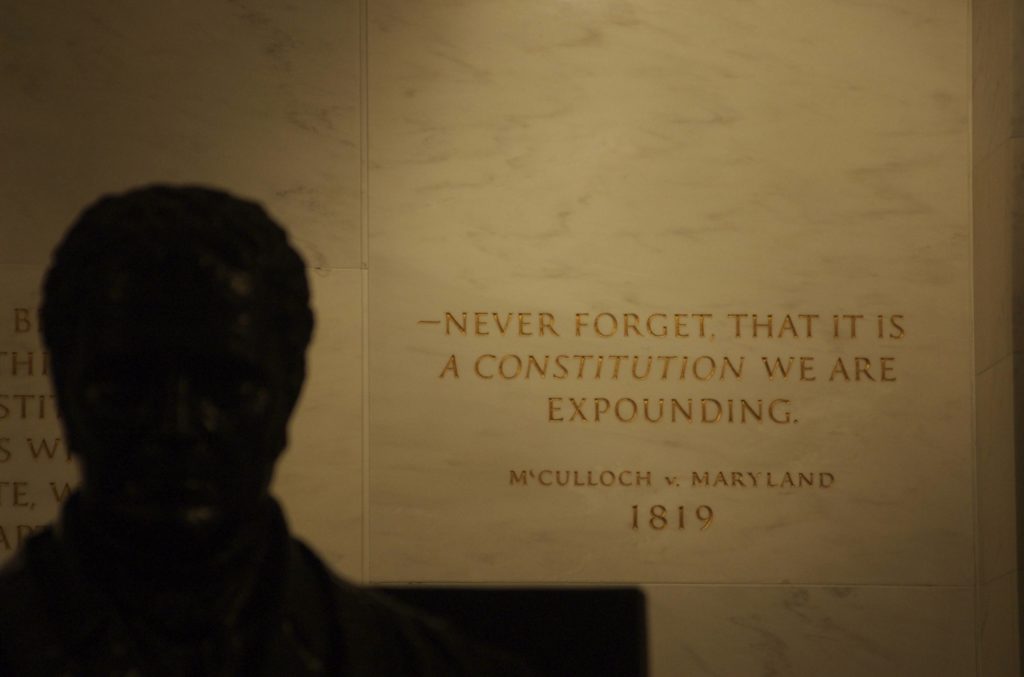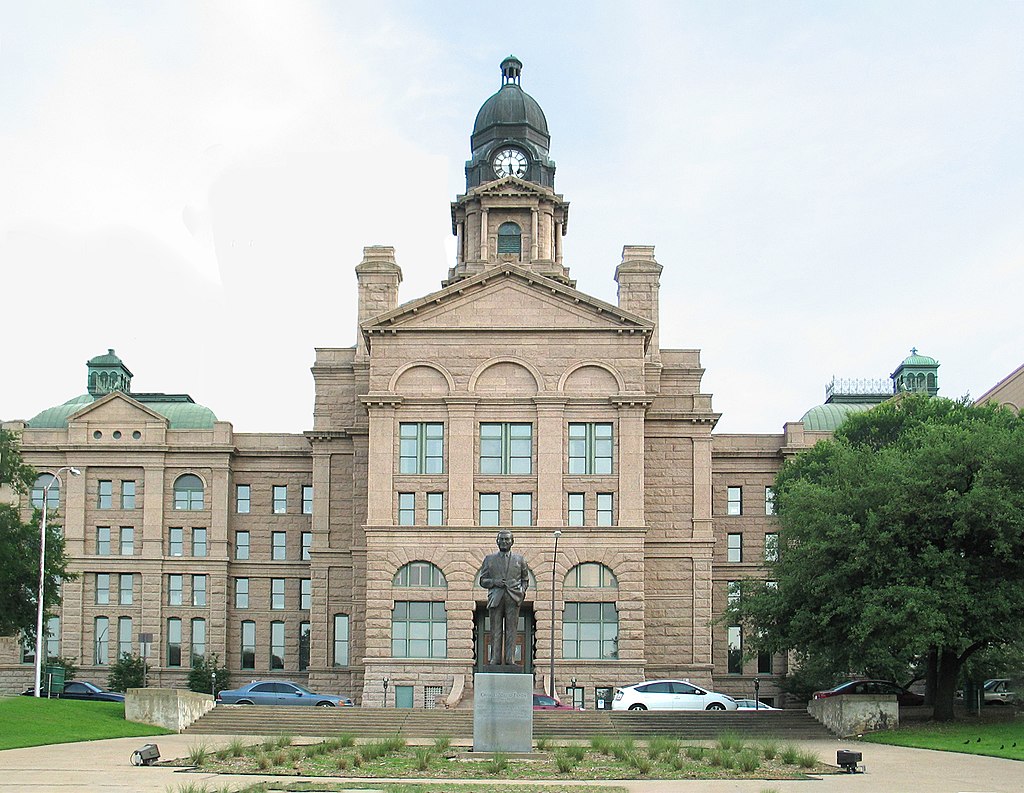
This essay is part of an ongoing partnership between Law & Liberty and the James Wilson Institute on Natural Rights and the American Founding. Essays in this series explore the rich interplay among law, governance, and political philosophy.
Holden T. Tanner, with a command of the relevant history and a sober-minded assessment of the current landscape, has shone a helpful spotlight on some of the recent pitfalls of the legal conservative movement. Some of us trying to reform that increasingly sclerotic movement have focused our recent intellectual energy urging a reorientation of both originalist theory and judicial practice toward a substantive conception of the common good and traditional principles of moral substance. Tanner, in reminding us of those non-originalist sources of law upon which would-be reformers of conservative jurisprudence might also draw—traditionalism, law and economics, and natural law—has performed a valuable and complementary service.
Tanner is at his best describing the nature of the “pyrrhic victory” for legal conservatives at large and of the “remarkable success of Antonin Scalia’s textualist jurisprudence.” Perhaps the most illuminating passage from Tanner’s essay is his characterization of what large swaths of legal conservatives have mistakenly imbibed as purported juridical orthodoxy:
Either a legislature provides a text, or the judge is at sea. When the judge is freed from text, there is nothing out there but raw preference and judicial will. This is the assertion we made to delegitimize living constitutionalism. The price we paid was our tradition of common law—the organic connection between American jurisprudence and natural law.
Tanner’s primary proposed solution to this muddle is to focus intellectual capital upon recovering a more robust, historically rooted conception of common law judging at the state level. Tanner’s repeated condemnation of the anachronistic, revisionist tropes about “judge-made law” are certainly on-point. Common law judges did not view their roles as making law, but as discovering it through customary human faculties—such as familiarity with principles of traditional morality, first and foremost the Bible, respect for well-established local and national customs and norms, reliance (to a debatable extent; see infra) on the sagacity of precedent, and the ability to synthesize conflicting precedents—and then prudentially applying that law on an ad hoc basis as it pertained to specific litigants. Contra Scalia, moreover, such acts are directly analogous to acts of judging in the U.S. constitutional and statutory order: a judge is always asked, even if implicitly, to “discover” consonant legal canons and constructions in the interstices of a specific prescribed congressional (or now, perhaps administrative) command, and the act of prudential application of a source of law to the specific named litigants in a suit properly before a tribunal is perhaps the sine qua non of efficacious judging.
We can cite for support here no lesser a conservative authority, and no greater an admirer of the profoundly conservative institution of the common law, than the great statesman Edmund Burke himself. As Jeremy Rozansky recently noted, in the specific context of Burke’s perhaps-unexpected views on the precedential doctrine of stare decisis, judicial precedents are “evidence of legal tradition” and “only one ground of legal argument.” Rather, the astute common law judge must consult other external factors in order to “render” those precedents “of full authority in law”:
They ought to be shewn; first, to be numerous and not scattered here and there;—secondly, concurrent and not contradictory and mutually destructive;—thirdly, to be made in good and constitutional times;—fourthly, not to be made to serve an occasion;—and fifthly, to be agreeable to the general tenor of legal principles, which overruled precedents, and were not to be overruled by them.
In taking a more pliant view of stare decisis and thus declining to conflate ad hoc common law adjudications with judge-made “law” itself, as so many contemporary lawyers and judges mistakenly do, Burke appeals to many of the customary tools in the judicial repertoire: tradition, history, prudence, and so forth. But perhaps most relevant, for both Tanner’s purposes and my own, is Burke’s final enumerated appeal to “the general tenor of legal principles,” which Burke viewed as so indispensable that they “overruled precedents, and were not to be overruled by them.” Burke’s appeal here is for the jurist to use as a lodestar something greater than an ad hoc precedent, or even series of precedent; he is referring to the very corpus of the common law itself and its substantive antecedents, such as the Bible and attendant principles of Christian morality.
It is this rediscovery of a “general tenor of legal principles” that Tanner hopes to see judicially implemented in non-constitutional and non-statutory cases, primarily at the state level—perhaps due to the sheer unlikelihood of ever overturning Erie Railroad v. Tompkins, the 1938 Supreme Court ruling studied by every first-year civil procedure student and which erroneously held there is no such thing as “federal general common law.” I share Tanner’s desire for a restoration of a judicial emphasis on ascertaining and prudentially applying a “general tenor of legal principles,” a notion which we can trace not merely to the English common law tradition, but also to the 17th-century jurist Hugo Grotius and the magnum opus of his intellectual successor Emerich de Vattel, The Law of Nations.
However, although I share Tanner’s desire, I foresee the actual operation of this restoration a little bit differently. And it is here where I see substantial overlap between Tanner’s call to arms and my own recent work, largely focused on constitutional and statutory interpretation, on what I call “common good originalism.”
Tanner, like many in the natural law-sympathetic camp, places a premium on “human reason,” which he views as the basis of the Roman law tradition that “helped fill in the gaps of English law.” Surely, such an emphatic resort to “human reason” for English common law and in the early stages of the then-nascent American republic made a great deal of sense, as a prudential and empiric matter. England was (and, at least nominally, remains) an overtly Christian nation, and the early American republic, while not expressly Christian, took a morally “thick” view of its religious underpinnings and was unambiguously rooted in the broader Judeo-Christian ethical tradition. Only shortly after the theologically heterodox Thomas Jefferson appealed to “divine Providence” in 1776, for instance, John Adams famously reminded his post-1787 countrymen that the U.S. Constitution was “made only for a moral and religious people” and was “wholly inadequate to the government of any other.”
The upshot is that unshackling jurists, elected officials, and legal and political theorists to deduce “human reason” certainly makes some empirical sense at a time when our national leaders might speak in the pious phraseology of how then-President George Washington spoke at his Thanksgiving Proclamation of 1789: “Whereas it is the duty of all Nations to acknowledge the providence of Almighty God, to obey his will, to be grateful for his benefits, and humbly to implore his protection and favor…” Where, as with Washington, a judicial or political statesman begins with firmly Judeo-Christian-anchored first principles, the likelihood that resort to sheer “reason” will veer off in unfortunate directions is greatly diminished.
From a conservative perspective that prioritizes, inter alia, biblical morality and attendant principles of traditional justice, such a deliberate unshackling perhaps makes less prudential sense in an increasingly late-stage republic many decades removed from such secularizing constitutional abominations as Everson v. Board of Education (1947) and Engel v. Vitale (1962). In such addled times, as Yoram Hazony has written, “the exercise of free human reasoning [can lead] to Marxism or to a quasi-Darwinian ‘white identity politics’ just as easily as it leads to social liberalism or libertarianism.” The trouble, in short, is that “reason” unmoored from an underlying stable understanding of human nature and natural justice will inevitably tend to drift in whichever (often bad) direction a strong-willed human actor desires. Such an appeal to pure “human reason” in the year 2021 is therefore no recipe for sustained conservative success, and it bodes poorly as a direct conduit for a broader common law restorative project.
Something a bit more concrete and well-defined is needed. I have argued that one possible source is the Preamble of the U.S. Constitution, which I view as the “telos of the American regime” and which is unambiguously oriented to the common good of the American nation. The Preamble was drafted by the 1787 Constitutional Convention’s Committee on Style, which consisted of four Anglophilic, common law-revering conservatives (Gouverneur Morris, Alexander Hamilton, Rufus King, and William Samuel Johnson) and one quasi-nationalist moderate (James Madison). By its plain terms, it elevates to the forefront principles of natural justice and the commonweal that served as interstitial guideposts for the greatest English common lawyers, as well as the greatest U.S. Supreme Court justices and elected officials alike—jurists such as John Marshall and Joseph Story, and epoch-defining political statesmen such as Abraham Lincoln. The Preamble is intellectually downstream of the common law tradition, and it is intrinsically oriented to the substantive common good.
Thus, rather than urging conservatives to “lead states to ground their common law reasoning in the natural law” and its ultimate undergird of untrammeled “human reason,” as Tanner suggests, we might alternatively urge such a common law restoration using the Preamble as a concrete touchstone. Such a touchstone is itself a direct link to the common law tradition and the common law tradition’s sundry underlying precepts, such as the Roman law, the Bible itself (even more so than the Roman law), and, indeed, a narrow conception of “reason” directly downstream of those rich antecedent sources of such reasoning.
If the Preamble is the ratio legis of the U.S. constitutional order, to borrow from Sir William Blackstone, then it ought to provide a convenient anchor for “discovering” the broader common law inheritance upon which many of the leading early-republic luminaries—men such as Hamilton, Adams, and Washington—understood that constitutional order to be predicated. The Preamble, as I wrote in July, “articulated a broader purposive orientation of the American constitutional order and republic toward principles of natural justice and the commonweal.” That is a much more concrete anchor off of which to base a restoration of state-level common law judging than is reliance upon pure “human reason.”
A common law restoration along these lines, centered at the state level (at least while overturning Erie remains a mere pipe dream), shares a great deal in common with common good originalism, as I have formulated the theory. Both projects involve fealty to our Anglo-American tradition, are unabashedly rooted in underlying precepts of biblical morality and natural justice, and point toward a path forward for conservative jurisprudence and the legal conservative movement at large that is neither positivist nor imprudently unshackled and unmoored, amidst the depressing realities of today’s de-Christianized America. The telos of the American regime, encapsulating as it does the sagacity of the common law tradition, provides legal conservatives’ best path forward.





